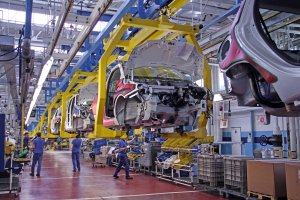In 2018, after 25 years of the North America Trade Agreement (NAFTA), the United States requested new rules which, among other requirements, increased the regional content in the production of automotive components and parts traded between the three partner countries, United States, Canada and Mexico. Signed by all three countries, the new trade agreement, USMCA, is to go into force in 2022. Nonetheless, after the 2020 Presidential election, the new treaty’s future is under discussion, and its impact on the automotive industry is not entirely defined. Another significant shift in this industry – the accelerated rise of electric vehicles – also occurred in 2020: while the COVID-19 pandemic largely halted most plants in the automotive value chain all over the world, at the reopening, the tide is now running against internal combustion engine vehicles, at least in the announcements and in some large investments planned in Europe, Asia, and the US.
The definition of the pre-pandemic situation is a very helpful starting point for the analysis of the possible repercussions of the technological and geopolitical transition, which has been accelerated by the epidemic, on geographical clusters and sectorial specializations of the main regions and countries. This paper analyzes the trade networks emerging in the past 25 years in a new analytical framework. In the economic literature on international trade, the study of the automotive global value chains has been addressed by using network analysis, focusing on the centrality of geographical regions and countries while largely overlooking the contribution of countries’ bilateral trading in components and parts as structuring forces of the subnetwork of countries and their specific position in the overall trade network.
The paper focuses on such subnetworks as meso-level structures emerging in trade networks over the last 25 years. Using the Infomap multilayer clustering algorithm, we are able to identify clusters of countries and their specific trades in the automotive international trade network and to highlight the relative importance of each cluster, the interconnections between them, and the contribution of countries and of components and parts in the clusters. We draw the data from the UN Comtrade database of directed export and import flows of 30 automotive components and parts among 42 countries (accounting for 98% of world trade flows of those items).
The paper highlights the changes that occurred over 25 years in the geography of the trade relations, in particular with regard to denser and more hierarchical networks generated by Germany’s trade relations within EU countries and by the US preferential trade agreements with Canada and Mexico, and the upsurge of China. With a similar overall variety of traded components and parts within the main clusters (dominated respectively by Germany, US, and Japan-China), the Infomap multilayer analysis singles out which components and parts determined the relative positions of countries in the various clusters and the changes over time in the relative positions of countries and their specializations in multilateral trades. Connections between clusters increase over time, while the relative importance of the main clusters and of some individual countries change significantly. The focus on US and Mexico and on Germany and Central Eastern European countries (Czech Republic, Hungary, Poland, Slovakia) will drive the comparative analysis.








